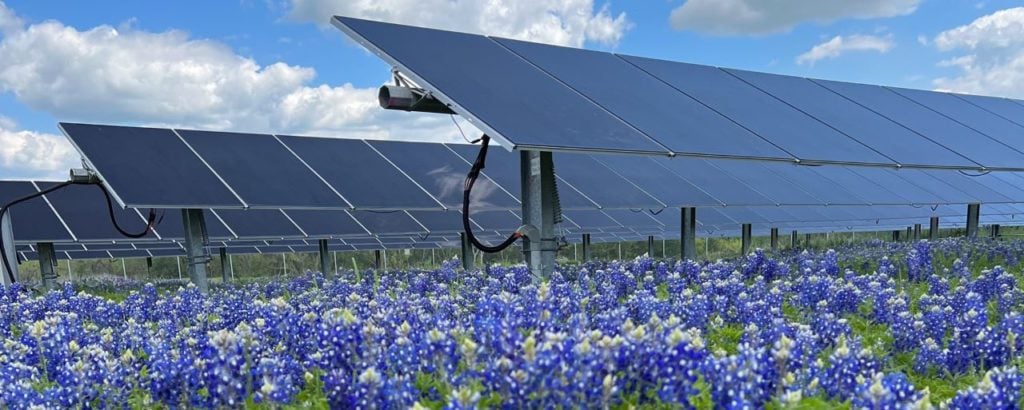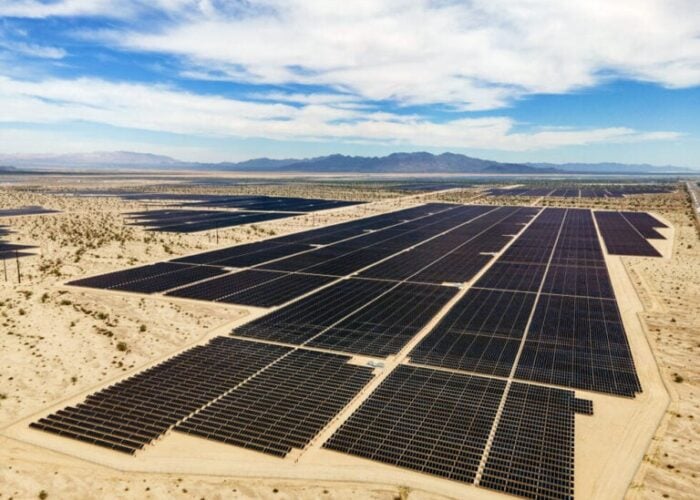
The top five US states for solar installation added over 18GW of new PV generation capacity in 2023 between them, in a year which saw solar account for 53% of all US electricity capacity additions.
The Solar Energy Industries Association (SEIA) published data last week breaking down the installations in these top 5 states, which it said were Ohio, Colorado, Florida, California and Texas (in ascending order). The SEIA said: “While federal clean energy policies [namely the Inflation Reduction Act (IRA)] played a major role in driving this growth, the work happening at the state level is the untold story of America’s favourite energy source in 2023.”
Try Premium for just $1
- Full premium access for the first month at only $1
- Converts to an annual rate after 30 days unless cancelled
- Cancel anytime during the trial period
Premium Benefits
- Expert industry analysis and interviews
- Digital access to PV Tech Power journal
- Exclusive event discounts
Or get the full Premium subscription right away
Or continue reading this article for free
New entrants
Ohio was the fifth-highest solar installer in 2023, adding 1.3GW of its now-total 2.3GW of capacity last year. The SEIA said that this represents a 1,230% increase compared with 2022.
The capacity additions were driven by utility-scale projects, the SEIA said, such as the 247MW site commissioned in November by National Grid Renewables in the state. Ohio reportedly has around 3GW of utility-scale projects in the pipeline, including the 577MW Fox Squirrel project that is currently under construction, joint-owned by Canadian energy firm Enbridge and EDF Renewables North America.
Ohio is also home to cadmium telluride (CdTe) thin-film solar manufacturer First Solar, where it is currently building a new research and development (R&D) centre.
Colorado came in fourth in 2023, adding 1.6GW of new solar generation capacity which the SEIA said was “nearly ten times more than it installed in 2022”. Two particular large solar acquisitions took place in Colorado last year – Enfinity Global bought a 546MWp portfolio of projects in September and EE North America acquired a majority stake in 700MW of Colorado PV in May.
Both Ohio and Colorado re-entered the top ranks of US solar states for the first time in over a decade. The IRA has increased the uptake of solar significantly in the US, and widened the pool of states deploying significant capacities; the SEIA said that 26 states (and Puerto Rico) have now installed over 1GW of solar capacity, compared with 14 states five years ago.
The usual suspects
The top three states are less surprising: Florida, California and Texas retained their podium positions as they continue to lead the US market.
Florida installed 3.2GW of solar in 2023. This was led by the residential segment, which saw over 50,000 new systems installed, the SEIA said, adding that tropical storms and hurricanes pushed Floridians to install more residential solar as they sought lower electricity prices and greater reliability.
Residential installations also play a large part in California’s solar market, which added 6.2GW of capacity in 2023. Despite the controversial decisions by the California Public Utilities Commission (CPUC) to alter the net energy metering (NEM) legislation in the state, which critics said would only benefit ‘big utilities’, California’s market is still the largest in the country.
Echoing predictions from the California Solar and Storage Association (CALSSA), the SEIA said that the California market is expected to decline by 36% in 2024 as a result of NEM legislation.
Topping the leaderboard, Texas installed 6.5GW of new solar in 2023. The SEIA predicts that Texas will considerably outstrip the rest of the US over the next decade, installing around 100GW by 2034. Energy storage has also seen an uptick in Texas – the Electric Reliability Council Of Texas (ERCOT) grid has experienced significant capacity backlog and has been warned of curtailment, which energy storage can help with.
PV Tech Premium published a deep dive into the opportunities and challenges for solar in Texas last year.






